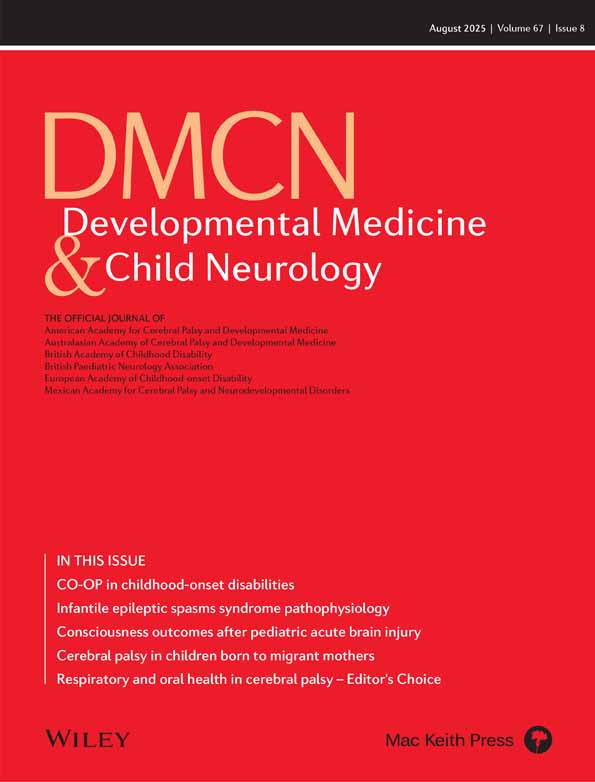COMMENTARY
Should the use of international guidelines for early detection of cerebral palsy be required for clinical trials?
First published: 15 June 2025
No abstract is available for this article.
DATA AVAILABILITY STATEMENT
Not required.
REFERENCES
- 1Novak I, Morgan C, Adde L, Blackman J, Boyd RN, Brunstrom-Hernandez J, et al. Early, Accurate Diagnosis and Early Intervention in Cerebral Palsy: Advances in Diagnosis and Treatment. JAMA Pediatr. 2017; 171: 897–907.
- 2Benfer KA, Ghosh AK, Chowdhury S, Moula G, Samanta S, Maiti P, et al. Early detection of infants with neurodevelopmental concerns indicative of cerebral palsy. Dev Med Child Neurol. [Forthcoming]
- 3Burton VJ, Kannan S, Jayakumar S, Gerner G, West S, Yenokyan G, et al. Longitudinal Hammersmith Infant Neurological Examination (HINE) Trajectories in Children with Cerebral Palsy Identified in High-Risk Follow-Up. J Clin Med. 2025; 14: 1572.
- 4Murugasen S, Springer P, Olusanya BO, Gladstone M, Newton C, Kakooza-Mwesige A, et al. Cerebral palsy in African paediatric populations: A scoping review. Dev Med Child Neurol. 2024; 66: 990–1012.
- 5Maitre NL, Damiano D, Byrne R. Implementation of Early Detection and Intervention for Cerebral Palsy in High-Risk Infant Follow-Up Programs: U.S. and Global Considerations. Clin Perinatol. 2023; 50: 269–79.




